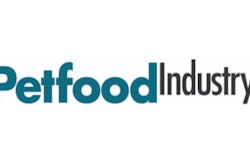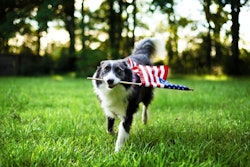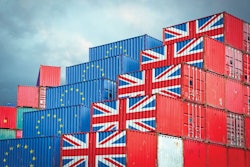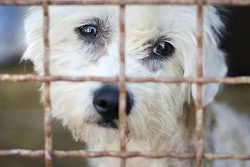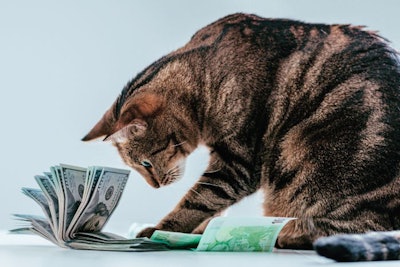
In the first three quarters of this year, unforeseen war, ongoing disease and climate disasters threw shade on previous financial predictions for 2022. These changes may have influenced both pet ownership and pet food buying trends as inflation reaches historic levels.
In a report released August 15, Euromonitor International analysts reduced their growth forecasts for many of the world’s major markets in 2022 and into the near future. Earlier predictions may fall short for most nations, including the United States and China, the world's two largest pet food markets. While the Euromonitor report “Global Economic Forecasts: Q3 2022,” didn’t specifically cover pet food, the effects of inflation and other worries may be influencing the pet food market.
I want my free, daily news update from Petfood Industry.
Financial constraints may be related to increases in dog, cat and other pet populations in shelters as owners give up pets or don’t adopt new animals. Shelters in the United Kingdom may be seeing this phenomenon already, reported Euronews. Across the Atlantic, United States pet adoption services have also experienced a dramatic change from the early pandemic surge in pet adoption.
Global economic situation in 2022
The insecure feelings affecting pet owners may be a global issue. Various issues threaten economic growth in 2022 and the coming years. The Russia-Ukraine War stood as the main destabilizing event in 2022. The increasingly endemic COVID-19 pandemic continues to cause disruptions, especially in China. Inflation and stagnation hinder growth worldwide, while supply chain problems persist.
“The global economic outlook has worsened for 2022-2023. In the baseline scenario, global real GDP growth is expected to decline to between 1.7-3.7% in 2022 and 1.8-4.0% in 2023,” Euromonitor analysts wrote in the report.
The resulting inflation harkens to the 1980’s, they wrote. As household buying power declines, so does consumer spending and other drivers of economic expansion. For low-income regions, this decline in standard of living could encourage civil unrest.
“Global inflation is expected to increase between 7.2-9.4% in 2022, before declining to 4.0-6.5% in 2023,” according to Euromonitor analysts.
Effects on pet food buyers and pet ownership rates
Previous crises suggest that the pet food industry overall tends to be resilient. Nevertheless, pet owners may now be reconsidering the costs of the pets they brought on board before the pandemic. Euronews reported on the increasing cost of pet ownership in the UK. In the UK and EU, the Russia-Ukraine war has increased the prices of energy, fuel, raw materials, foods and other basics of life. The higher costs may be influencing some pet owners’ decisions to give up their animals. The coordinator of one animal welfare group told Euronews that more pets are coming in, while fewer are going out, although pet owners are hesitant to state financial troubles as the reason.


